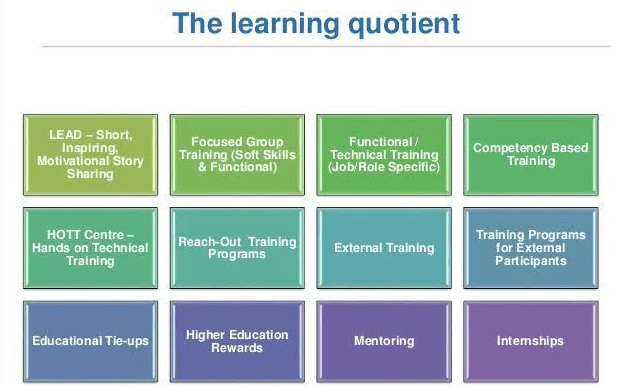In a world marked by rapid technological advancements and dynamic shifts in the job market, the importance of traditional intelligence quotient (IQ) and emotional intelligence (EQ) is being complemented by a new metric – the Learning Quotient (LQ). Learning Quotient refers to an individual’s capacity and eagerness to learn, unlearn, and relearn, making it a crucial factor in navigating the complexities of the modern professional landscape. In this article, we will delve into the concept of Learning Quotient, its significance, and how individuals and organizations can harness its power for continuous growth.
Understanding Learning Quotient:
Learning Quotient is a measure of an individual’s ability to acquire new knowledge, skills, and competencies effectively and efficiently. Unlike traditional intelligence metrics, which focus on static cognitive abilities, LQ emphasizes the dynamic nature of learning in a world where change is constant. It encompasses adaptability, curiosity, resilience, and a proactive approach to acquiring new information and skills.

The Significance of Learning Quotient:
- Adaptability in the Face of Change:In an era of rapid technological advancements and evolving industries, the ability to adapt is paramount. Individuals with a high Learning Quotient can quickly embrace new technologies, methodologies, and industry trends, positioning themselves as valuable assets in any professional setting.
- Continuous Improvement:Learning Quotient goes beyond formal education. It reflects a commitment to continuous improvement and a mindset that actively seeks opportunities for growth. Individuals with a high LQ are not content with the status quo; they constantly seek ways to enhance their skills and knowledge base.
- Resilience in the Face of Failure:Learning often involves experimentation and the possibility of failure. A high Learning Quotient is associated with resilience – the ability to bounce back from setbacks, extract lessons from failures, and use them as stepping stones for future success.
- Innovation and Creativity:A keen desire to learn is often coupled with a sense of curiosity and creativity. Individuals with a high Learning Quotient are more likely to approach challenges with innovative solutions, drawing upon a diverse range of skills and experiences.
Nurturing Learning Quotient:
- Cultivating a Growth Mindset:The foundation of a high Learning Quotient lies in cultivating a growth mindset. Embracing challenges, seeing effort as a path to mastery, and learning from criticism are key aspects of a growth mindset that propels continuous learning.
- Encouraging Lifelong Learning:Organizations play a pivotal role in fostering a culture of continuous learning. Offering training programs, mentorship opportunities, and resources for skill development can create an environment where employees are encouraged to enhance their Learning Quotient.
- Embracing Diversity of Learning Styles:Recognizing that individuals have diverse learning styles is essential. Some thrive in traditional classroom settings, while others may prefer experiential learning, online courses, or collaborative projects. Embracing this diversity ensures that everyone has the opportunity to learn in a way that suits them best.
Real-world Examples of Learning Quotient in Action:
- Google’s 20% Time:Google famously implemented the “20% Time” policy, allowing employees to spend a fifth of their workweek on projects outside their core responsibilities. This initiative encourages innovation and taps into employees’ Learning Quotient by providing time and resources for exploring new ideas and skills.
- Microsoft’s Hackathons:Microsoft regularly organizes hackathons, where employees from different departments come together to work on innovative projects. This not only fosters collaboration but also stimulates a culture of continuous learning and creativity.
- LinkedIn Learning Platform:LinkedIn offers a learning platform that allows professionals to access a wide range of courses on various subjects. This initiative empowers individuals to take control of their professional development, enhancing their Learning Quotient at their own pace.
Conclusion:
In a world where the only constant is change, the ability to learn and adapt becomes a strategic advantage. Learning Quotient emerges as a crucial metric in assessing an individual’s preparedness for the challenges of the modern workforce. As organizations and individuals embrace a culture of continuous learning, they position themselves not only to thrive in the present but also to lead the way in shaping the future. The true power of Learning Quotient lies not just in acquiring knowledge but in fostering a mindset that sees every challenge as an opportunity to learn, grow, and excel.











